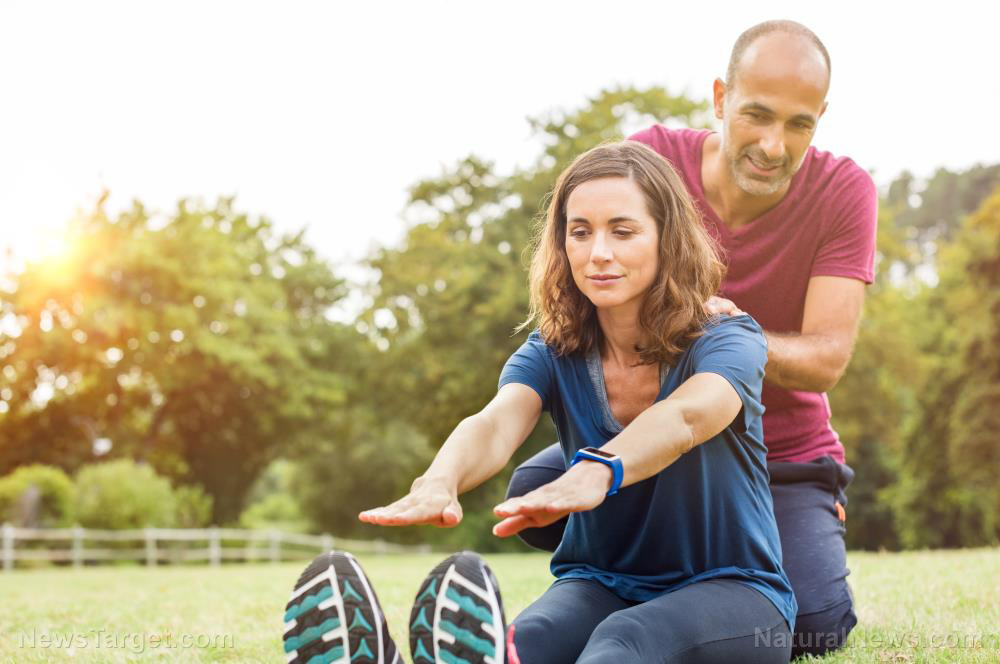A 10-minute walk a day keeps osteoarthritis away, studies suggest
09/09/2019 / By Janine Acero

Osteoarthritis is a chronic and painful condition that can limit a person’s movements. Ironically, a recent study suggests that if you want to manage the symptoms of osteoarthritis, you should consider moving around more.
According to the study, which appeared in the American Journal of Preventive Medicine, brisk walking for just one hour a week can help people with osteoarthritis maintain their independence and postpone disability.
Brisk walking every day may prevent mobility disability in people with osteoarthritis
Osteoarthritis is the most common form of arthritis. More than 30 million Americans suffer from this condition, according to the Arthritis Foundation. The lifetime risk of developing symptomatic knee osteoarthritis is 45 percent. Human joints are covered with cartilage, which provides a smooth surface for joint motion and acts as a cushion between the bones. Osteoarthritis occurs when the cartilage deteriorates and causes pain, swelling, and mobility issues.
It is estimated that only one in 10 people with knee osteoarthritis is able to reach government recommendations for physical activity. It may seem counterintuitive, but the current study recommends 10 minutes of brisk walking a day to manage the painful symptoms of osteoarthritis.
“Many people with arthritis are inactive – not only do they not meet guidelines, they do almost no moderate activity,” says Dorothy Dunlop, lead author of the study and professor of preventive medicine at Northwestern University Feinberg School of Medicine in Chicago. She says that engaging in physical activity for 10 minutes each day (or one hour of activity per week) is very doable, and that even this small amount of activity can have a very meaningful health benefit. She hopes that this information can encourage people with osteoarthritis to start moving more.
To find out how much physical activity is necessary to help patients prevent disability, the researchers looked at over four years of data from more than 1,500 adults in the National Osteoarthritis Initiative from Baltimore, Maryland; Pittsburg, Pennsylvania; Columbus, Ohio; and Pawtucket, Rhode Island. The participants were 49 to 83 years old; 56 percent were female and 38 percent had a BMI (body mass index) of 30 or higher. At the beginning of the study, the participants reported feeling pain, aching, or stiffness in lower extremity joints due to osteoarthritis, but they were free of any disability.
The researchers monitored the participants’ physical activities through accelerometers. They assessed disability-free status at the start of the study, at the two-year mark, and on the fourth year at end of the study. They measured mobility with a timed walking test and assessed activities of daily living (ADL) disability-free status based on reports of the participants’ ability to perform basic ADL tasks, such as walking across a room, dressing, bathing, eating, and using the toilet.
The researchers found that the participants who engaged in moderate to vigorous physical activity for one hour each week maintained their ability to perform ADLs and reduced their risk of ADL disability by almost 45 percent. The weekly one-hour exercise also reduced their risk of mobility disability (walking too slowly or less than one meter per second) by 85 percent.
“These findings are encouraging, but not surprising,” says Ankit Bansal, a fellow of orthopedic surgery at Johns Hopkins Medicine in Baltimore who was not involved in the study. “Based on the patients I meet who come in with arthritic pain, the ones who move around the most are the ones who are the most pain-free.”
The researchers hope to show older adults that achieving this moderate goal can give them real benefits. They also wish to motivate the elderly to strive for more activity so they can get the whole array of health benefits exercise offers.
“It should not replace the recommended amount because there are many benefits to exercise that go beyond what we looked at in this study, but it’s an important start,” says Dunlop.
Patients can work toward an activity goal slowly but steadily to help them manage the symptoms of osteoarthritis. Dunlop also says that people with osteoarthritis should talk to their health care providers about anything that hinders them from engaging in physical activity to uncover its cause and find possible solutions.
“One thing that people tend to feel is that if they have a lot of pain they shouldn’t ‘aggravate it’ and therefore they shouldn’t move a whole lot,” said Bansal. “I think that tends to be the opposite of what we generally tell people, and that would go against what this study shows. Not moving is not the answer.”
Sources include:
Submit a correction >>
Tagged Under:
activities of daily living, aging, aging secrets, alternative medicine, anti-aging, arthritis, brisk walking, cartilage, chronic pain, disability, exercise, fitness, healing, holistic treatments, joint pain, joints, knee osteoarthritis, longevity, men's health, mobility, natural cures, natural medicine, Naturopathy, Osteoarthritis, pain relief, physical activity, prevention, remedies, research, slender, walking, women's health
This article may contain statements that reflect the opinion of the author
RECENT NEWS & ARTICLES
ArthritisCures.News is a fact-based public education website published by Arthritis Cures News Features, LLC.
All content copyright © 2018 by Arthritis Cures News Features, LLC.
Contact Us with Tips or Corrections
All trademarks, registered trademarks and servicemarks mentioned on this site are the property of their respective owners.


















